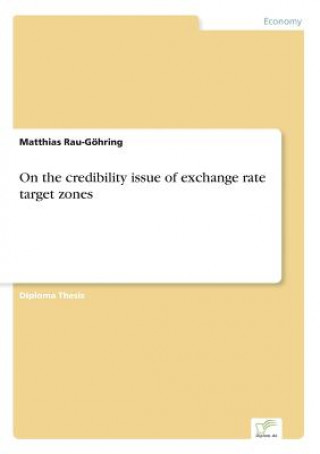
Kod: 02434034
On the credibility issue of exchange rate target zones
Autor Matthias Rau-Göhring
Diploma Thesis from the year 1999 in the subject Economics - Macro-economics, general, grade: 2,0, University of Bonn (Wirtschaftswissenschaften), language: English, abstract: Inhaltsangabe:Zusammenfassung:§Währungskrisen, wie die ... więcej
- Język:
 Angielski
Angielski - Oprawa: Miękka
- Liczba stron: 70
Wydawca: Diplom.de, 2003
- Więcej informacji o książce

Zobacz książki o podobnej tematyce
-

Philosophy of Religion
774.59 zł -

Mindset of a Godly Woman Living Single in a Secular World!
55.63 zł -

Bank Management - Text & Cases 5e (WSE)
1371.37 zł -

Derbyshire
316.63 zł -10 %
Podaruj tę książkę jeszcze dziś
- Zamów książkę i wybierz "Wyślij jako prezent".
- Natychmiast wyślemy Ci bon podarunkowy, który możesz przekazać adresatowi prezentu.
- Książka zostanie wysłana do adresata, a Ty o nic nie musisz się martwić.
Więcej informacji o On the credibility issue of exchange rate target zones
Za ten zakup dostaniesz 188 punkty
 Opis
Opis
Diploma Thesis from the year 1999 in the subject Economics - Macro-economics, general, grade: 2,0, University of Bonn (Wirtschaftswissenschaften), language: English, abstract: Inhaltsangabe:Zusammenfassung:§Währungskrisen, wie die des Europäischen Währungssystems (EWS) 1992, können noch immer nur unzureichend vorausgesagt werden. Es wird jedoch anerkannt, dass die Glaubwürdigkeit eines jeden Währungssystems ausschließlich endogen bestimmt wird, d.h. durch Interaktion der einzelnen Akteure an den Wechselkursmärkten. §Die vorliegende Arbeit untersucht, ob ein bestimmtes Glaubwürdigkeitsmaß, eingeführt von Avesani, Gallo und Salmon (1995), geeignet ist, die große EWS Krise 1992 vorauszusagen. Dabei handelt es sich um ein dynamisches Spiel, in dem die beiden Akteure (Zentralbank und Finanzmarkt) miteinander interagieren und damit die Glaubwürdigkeit des Systems aushandeln . Es wird gezeigt, dass o.g. Glaubwürdigkeitsmaß ein geeigneter Indikator für Währungskrisen darstellt, was empirisch anhand des französischen Francs, der italienischen Lira und des niederländischen Guldens nachgewiesen wird.§Introduction:§The objective of the present study is to present the literature of exchange rate target zones and to explore empirically the Avesani-Gallo-Salmon credibility measure for selected currencies belonging to the Exchange-Rate Mechanism (ERM) of the European Monetary System (EMS). In the past decade the empirical literature on real world target zones mushroomed considerably, but still, its overall significance in explaining strains in the relevant foreign exchange markets remains relatively low. In this context, I will explore whether the Avesani-Gallo-Salmon (1995) credibility measure demonstrates more power than earlier studies in the analysis of the 1992/3 EMS crisis.§It is not my intention to pursue a normative analysis whether flexible or fixed exchange rates or intermediate regimes are superior to one another in terms of their economic implications. This question is beyond the scope of my analysis.1 Given that target zones are applied frequently in the real world, I purely want to figure out, whether their application is sensible on grounds of a firm commitment of the policy-makers.§Exchange rate bands have been discussed widely after the breakdown of the Bretton Woods System in 1973. Although experiences with the fixed exchange rate regime were disappointing in the 1960s, increased volatility and/or overshooting of the exchange rates in the 1970s let economists doubt the famous argument by Friedman (1953) that speculation would stabilize exchange rate movements in the floating system. McKinnon (1976) reckoned that there may be an insufficient amount of speculation due to institutional constraints, other economists suspected speculators to be ill-informed and therefore act in an irrational manner. However, the desire to avoid speculative pressure and crises within the foreign exchange market resulted in the IMF s Guidelines for Floating, which entailed the possibility that a country brings its exchange rate within, or closer to, some target zone of rates (see IMF (1974, p.181). In 1979 the European Monetary System was established and -although different in design- subsequently some Latin American, Scandinavian and South-East Asian countries set up unilateral target zones for their exchange rates, too. With the Plaza Communiqué of the G-5 countries in 1985 and its successor, the Louvre Accord of 1987, also the major industrial countries returned to manage their exchange rates rather than either fix or float them. Exchange-rate target zones (target zones from now on) were seen as a sensible third way of exchange rate management. They are defined by a central parity for the exchange rate and a fluctuation band around this parity.§The first comprehensive target zone proposal was made by Williamson (1983). He presented a model that subsumes the following featu...
 Szczegóły książki
Szczegóły książki
Kategoria Książki po angielsku Economics, finance, business & management Economics
322.77 zł
- Pełny tytuł: On the credibility issue of exchange rate target zones
- Autor: Matthias Rau-Göhring
- Język:
 Angielski
Angielski - Oprawa: Miękka
- Liczba stron: 70
- EAN: 9783838667355
- ISBN: 3838667352
- ID: 02434034
- Wydawca: Diplom.de
- Waga: 104 g
- Wymiary: 210 × 148 × 4 mm
- Data wydania: 28. April 2003
Ulubione w innej kategorii
-
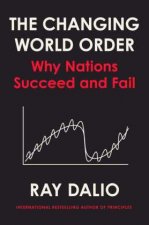
Principles for Dealing with the Changing World Order
93.24 zł -15 % -

Team Topologies
93.24 zł -23 % -

Freakonomics
36.58 zł -14 % -

Misbehaving - The Making of Behavioral Economics
48.58 zł -5 % -

Indispensable Milton Friedman
110.98 zł -11 % -

Little Book of Economics
47.37 zł -23 % -

Why Nations Fail
47.27 zł -14 % -

Pyramid Principle, The
189.81 zł -4 % -
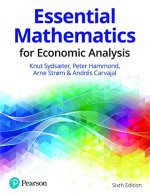
Essential Mathematics for Economic Analysis
316.12 zł -7 % -
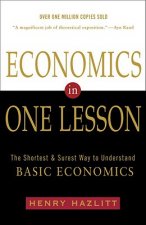
Economics In One Lesson
75.60 zł -13 % -

Predictably Irrational
66.62 zł -14 % -

Price of Inequality
48.58 zł -5 % -

(Mis)Behaviour of Markets
61.28 zł -23 % -

Debt, 10th Anniversary Edition
134.37 zł -12 % -

A-Level Economics: Year 1 & 2 Complete Revision & Practice (with Online Edition)
120.25 zł -10 % -

The Invisible Hand
35.37 zł -3 % -

Liar's Poker
60.98 zł -

Rational Optimist
47.27 zł -14 % -

Irrational Exuberance
88.50 zł -7 % -

Art of Statistics
52.41 zł -15 % -

Scrum - A Pocket Guide - 3rd edition
96.66 zł -5 % -

Hypomanic Edge
101.91 zł -

How I Made One Million Dollars Last Year Trading Commodities
205.84 zł -4 % -

Misbehavior of Markets
114.10 zł -

Econometric Analysis, Global Edition
364.51 zł -

Cartoon Introduction to Economics
79.32 zł -13 % -

Economics: The User's Guide
61.28 zł -15 % -

Rise of Carry: The Dangerous Consequences of Volatility Suppression and the New Financial Order of Decaying Growth and Recurring Crisis
131.75 zł -7 % -

Myth of Capitalism - Monopolies and the Death of Competition
110.98 zł -11 % -

How Rich Countries Got Rich and Why Poor Countries Stay Poor
70.45 zł -23 % -

Business Etiquette in Brief
63.40 zł -4 % -

Intermediate Microeconomics and Its Application
449.39 zł -

Discovery, Capitalism & Distributive Justice
94.85 zł -

Economic Point of View
114.61 zł -

Are the Rich Necessary?
53.62 zł -6 % -

Driving Digital Transformation
93.24 zł -23 % -

Start-Up Nation
43.44 zł -15 % -

Economic Facts and Fallacies
81.24 zł -10 % -

Decision Book
76.80 zł -7 % -
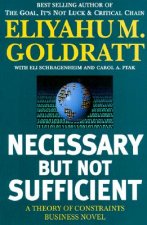
Necessary but Not Sufficient
85.68 zł -5 % -

Freakonomics
29.32 zł -15 % -

Economics Book
91.42 zł -14 % -

Leading at a Higher Level
130.33 zł -5 % -

Principles of Economics
76.60 zł -1 % -

Macroeconomics For Dummies
99.79 zł -11 % -

45 Second Presentation That Will Change Your Life
49.69 zł -4 % -

Economics of the Public Sector
353.72 zł -

Factfulness
52.21 zł -10 % -

Currency Wars
73.68 zł -11 %
zadowolonych klientów
Od roku 2008 obsłużyliśmy wielu miłośników książek, ale dla nas każdy był tym wyjątkowym.
Copyright! ©2008-24 libristo.pl Wszelkie prawa zastrzeżonePrywatnieCookies



 21 milionów książek
21 milionów książek Dostawa 10.99 zł
Dostawa 10.99 zł (32) 444 93 66 (8-15.30h)
(32) 444 93 66 (8-15.30h)